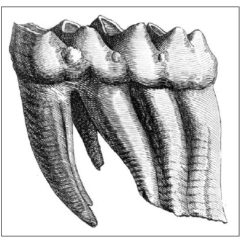Earth is very good at cosmetics: it quickly and efficiently covers its scars. The Chicxulub impact that wiped out the Cretaceous was one of the largest impact events in the last hundred million years in the Solar System, and yet it left no visible trace today, save for an arc of carsic structures known as cenotes in the Yucatan Peninsula. We had to dig deep and hard to find it. So it is no surprise that new impact events are still being found. Nozaki et al. now declare on Scientific Reports to have found 11 million years old ejecta in the sediments of the North Pacific. Ejecta, mind you, not the crater. That is unknown yet.
We managed to link only one mass extinction to asteroid impact. That might be the case. But impacts have been (and will be) a constant in Earth history. While globally catastrophic impacts are rare, what about locally catastrophic ones? They must have had important ecological consequences. A region-devastating impact can still alterate weather patterns and radically steer the direction of life history. A promising but localized lineage can be wiped off, a destroyed area can be re1populated and lead to speciation, and so on. Our past must have been sculpted by many more fatal days than the one at Chicxulub, and we still have almost no idea.
